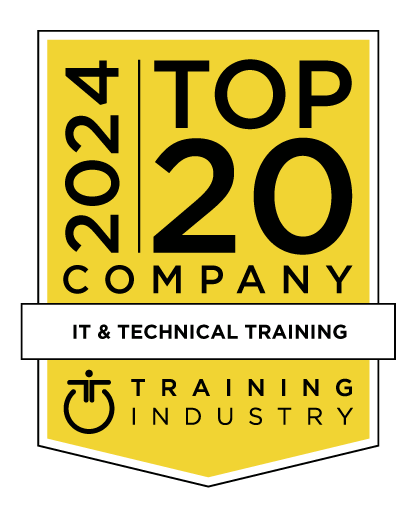title
Please take a moment to fill out this form. We will get back to you as soon as possible.
All fields marked with an asterisk (*) are mandatory.
Turbonomic: Container Platform Optimization
Course Description
Overview
This advanced-level course teaches how IBM Turbonomic's patented analysis engine delivers visibility, control, and optimization across the entire application stack to assure the performance of running micro-services in Kubernetes and Red Hat OpenShift, as well as the efficiency of the underlying infrastructure. This course explains how Turbonomic discovers container platform clusters and connects data from APM targets, such as Instana, for full-stack visualization. The course teaches how Turbonomic assures performance and maximizes efficiency throughout the stack by intelligently scaling the container cluster to provision and suspend nodes based on application resource demand. Learners will understand how Turbonomic uniquely solves the problem of resource fragmentation and avoids performance bottlenecks by intelligently moving container pods to manage the fluctuating demand. Turbonomic provides dynamic cluster scaling as well as horizontal scaling to meet SLO demands. This course includes common troubleshooting techniques for KubeTurbo, container platform planning, dashboards, and SaaS reporting.
Objectives
After completing this course, you should be able to:
- Explain how Turbonomic helps in optimizing container environments for performance and cost efficiency
- Gain full stack visualization of the container platforms using Turbonomic
- Understand how Turbonomic discovers container platform environments through Kubeturbo and learn about Turbonomic support for Red Hat OpenShift Virtualization
- Describe the types of actions Turbonomic generates for optimized vertical resizing, continuous proactive pod placement, SLO-based horizontal scaling, and dynamic cluster scaling
- Create policies to automate Turbonomic actions in container environments
- Run planning scenarios to optimize container clusters and migrate containerized workloads from one container platform cluster to another
- Explore the container dashboards in Turbonomic and SaaS reporting
- Evaluate horizontal scaling of pods to meet Service Level Objectives (SLO) for container clusters including support for gen AI Large Language Model (LLM) inferencing workloads
- Set up advanced integrations with Prometurbo as well as Operator Resource Mapping (ORM)
- Learn common troubleshooting techniques for Kubeturbo deployments
Audience
Consultants, System Administrators, DevOps Engineers, Operators, Site Reliability Engineers
Topics
Units:
- Unit 1: An overview of container platform optimization
- Unit 2: Discovering container platform environments using Turbonomic
- Unit 3: Full stack visualization
- Unit 4: Optimized vertical resizing
- Unit 5: Continuous pod placement
- Unit 6: Service Level Objective based horizontal scaling
- Unit 7: Dynamic cluster scaling
- Unit 8: Container platform planning
- Unit 9: Container dashboards and SaaS reporting
- Unit 10: Common troubleshooting techniques
Self-Paced Training Info
Learn at your own pace with anytime, anywhere training
- Same in-demand topics as instructor-led public and private classes.
- Standalone learning or supplemental reinforcement.
- e-Learning content varies by course and technology.
- View the Self-Paced version of this outline and what is included in the SPVC course.
- Learn more about e-Learning
Course Added To Shopping Cart
bla
bla
bla
bla
bla
bla
Self-Paced Training Terms & Conditions
This is a Self-Paced virtual class; it is intended for students who do not need the support of a classroom instructor.
If you feel you would better benefit from having access to a Subject Matter Expert, please enroll in the Instructor-Led version instead. Minimal technical support is provided to address issues with accessing the platform or problems within the lab environment.
Before you enroll, review the system requirements to ensure that your system meets the minimum requirements for this course. AFTER YOU ARE ENROLLED IN THIS COURSE, YOU WILL NOT BE ABLE TO CANCEL YOUR ENROLLMENT. You are billed for the course when you submit the enrollment form. Self-Paced Virtual Classes are non-refundable. Once you purchase a Self-Paced Virtual Class, you will be charged the full price.
After you receive payment confirmation from LearnQuest, you will be sent further access instructions and time limits for your course from IBM.
IMPORTANT!!! If your course provides access to a hands-on lab (Virtual Lab Environment), you will have a specific number of days (varies course by course) on the remote lab platform to complete your hands-on labs. Do not start your lab until you are ready to use your lab time effectively. Time allotted in the virtual lab environment will be indicated once you log into your course. The self-paced format gives you the opportunity to complete the course at your convenience, at any location, and at your own pace. The course is available 24 hours a day.
If the course requires a remote lab system, the lab system access is allocated on a first-come, first-served basis. When you are not using the elab system, ensure that you suspend your elab to maximize your hours available to use the elab system. Note: This does not add additional days to your Lab Environment time frame.
Click the Skytap Connectivity Test button to ensure this computer's hardware, software and internet connection works with the SPVC Lab Environment.
Click the Skytap Connectivity Documentation button to read about the hardware, software and internet connection requirements.
Exam Terms & Conditions
Sorry, there are no classes that meet your criteria.
Please contact us to schedule a class.

STOP! Before You Leave
Save 0% on this course!
Take advantage of our online-only offer & save 0% on any course !
Promo Code skip0 will be applied to your registration
Purchase Information
title
Please take a moment to fill out this form. We will get back to you as soon as possible.
All fields marked with an asterisk (*) are mandatory.










